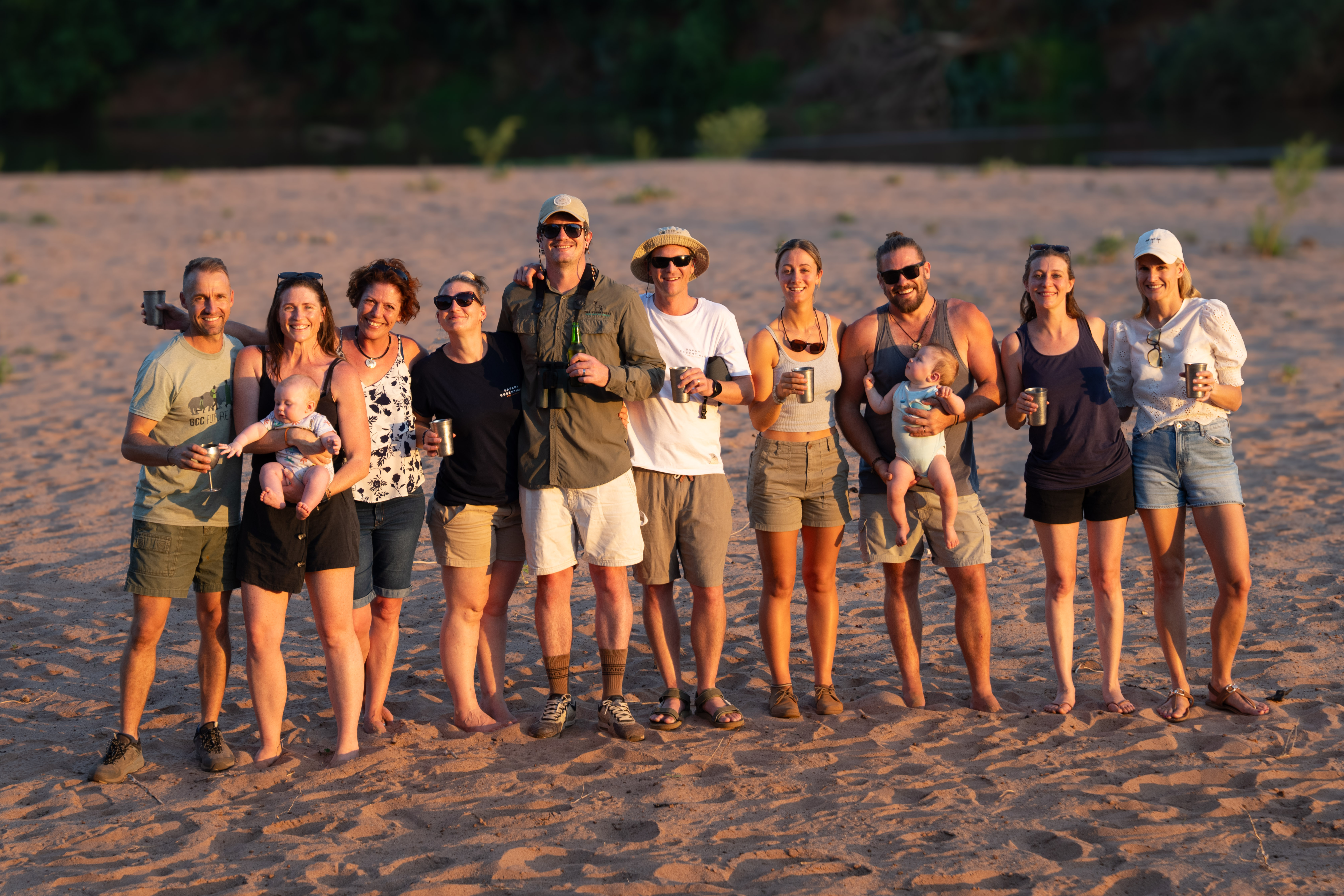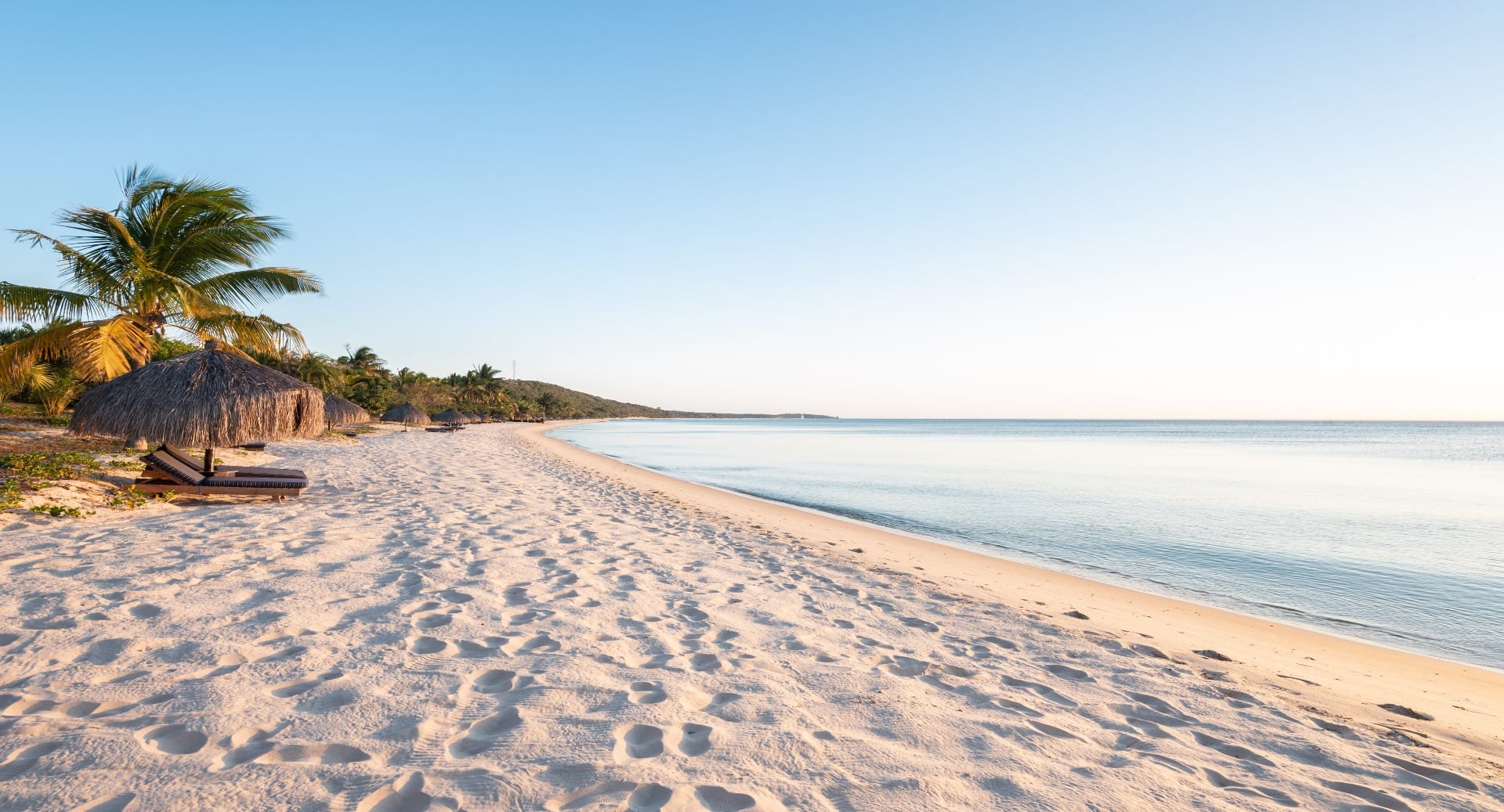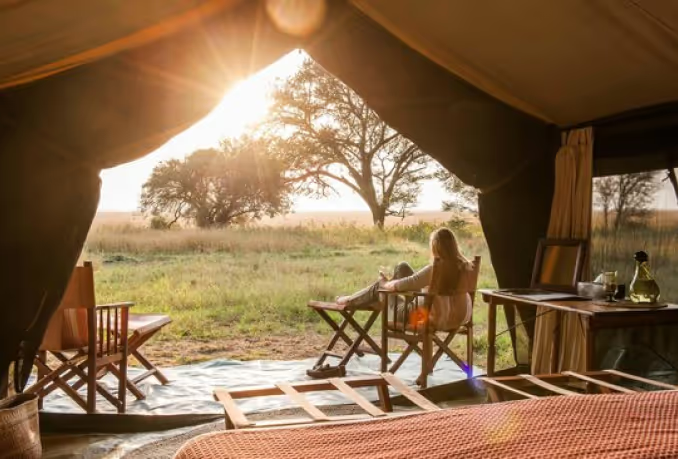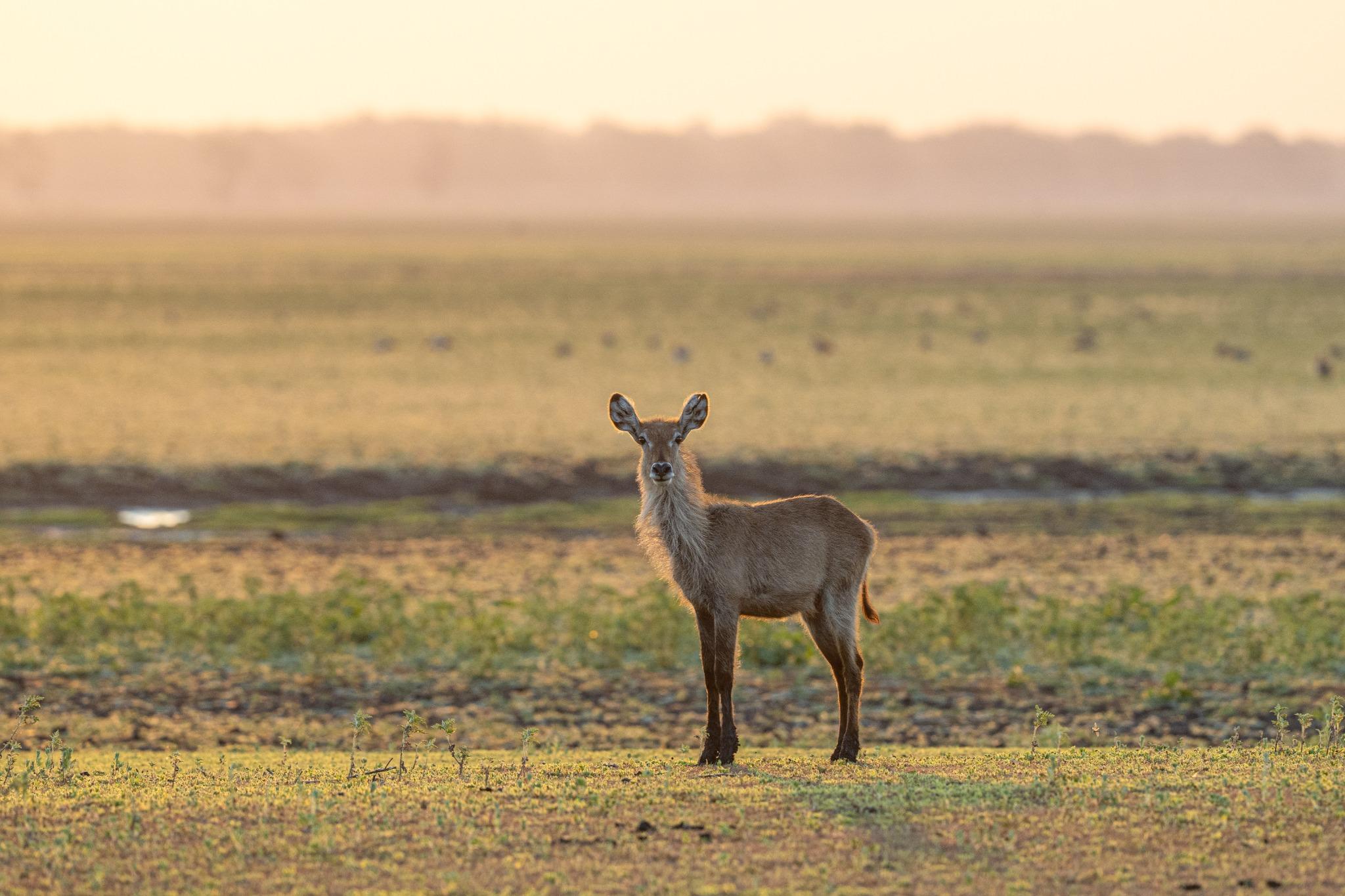
When Brett returned from his trip to Gorongosa in June 2025, his enthusiasm was contagious. After years of hearing about this magical place, I knew I finally needed to see it for myself. And I am so glad that I did. This place blew me away!
Gorongosa is a vast national park in central Mozambique. It sits in the southern end of Africa’s Great Rift Valley, covering 400,000 hectares of forest, floodplains and savannas. For reference, it’s about six times the size of South Africa’s Sabi Sand Nature Reserve, and it has only three established lodges. This means that you hardly ever see another person or vehicle.
Mount Gorongosa rises to 1,863 meters and is largely responsible for the park’s biodiversity. The mountain’s weather system creates significant rainfall that feeds rivers flowing into Lake Urema. The resulting seasonal floodplains are incredibly fertile which supports abundant life.
While on safari in Gorongosa, animals are everywhere. The waterbuck population has surged and numbers above 60,000 individuals! Elephants, warthogs, buffalos, oribis, monkeys, baboons, lions, and wild dogs are also regularly seen. And of course, because of the diversity of habitats, it’s a birding hotspot, including some endemics. It’s also an incredibly beautiful reserve. Iconic trees like lala palms, fever trees, and baobabs dot the landscape.
Getting to Gorongosa is surprisingly easy. It’s a quick hour-and-a-half flight to Beira from Johannesburg, where you’re greeted by the team who assist you with immigration. Then a short bush flight, about 40 minutes, and you touch down into true wilderness.
But what makes this place remarkable is not only its wildlife and beautiful landscapes, but the story of how it came back to life.

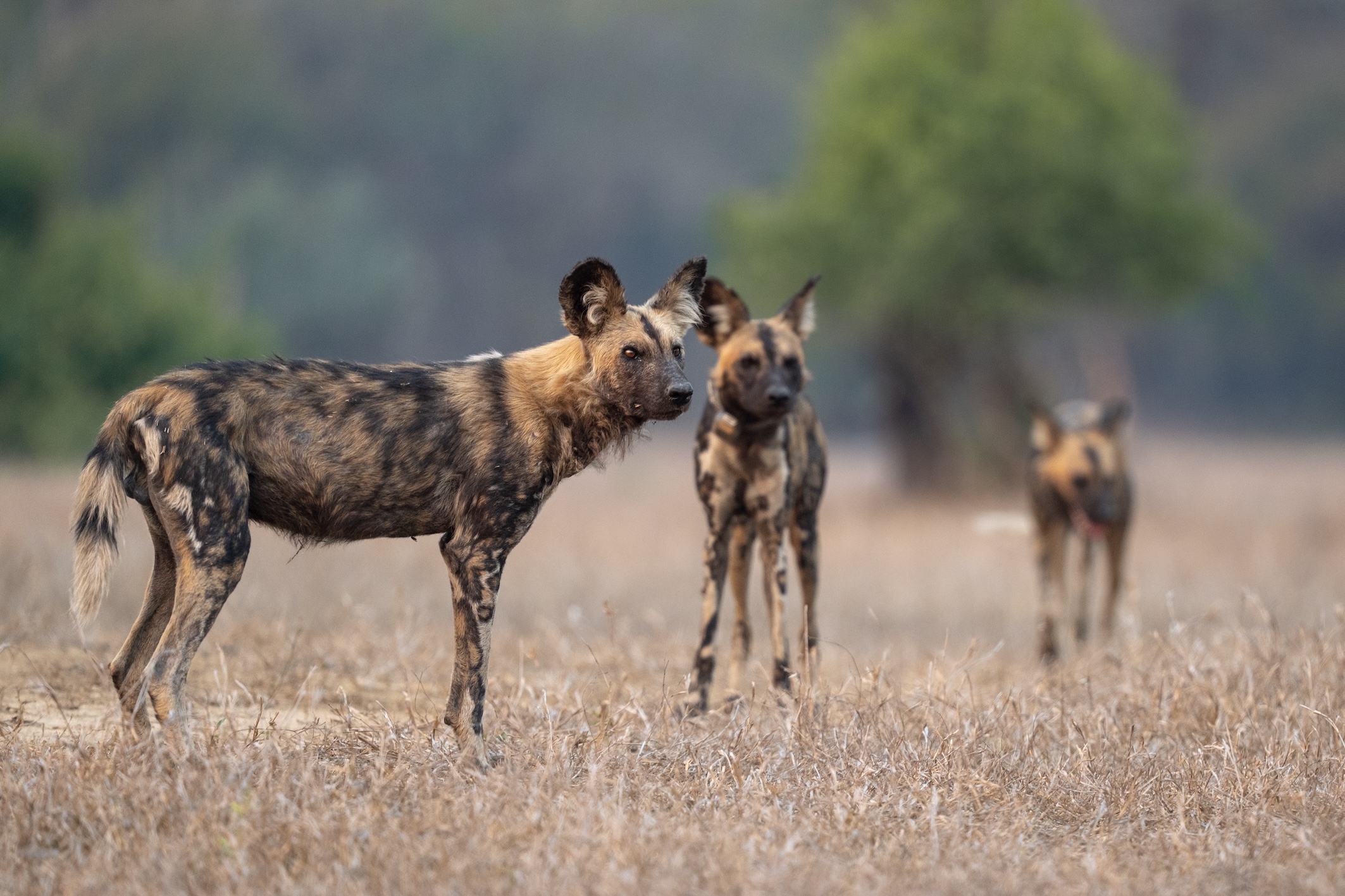
Gorongosa was first established in 1921 as a hunting reserve under Portuguese colonial rule, then became a national park in 1960. For years it flourished. Then Mozambique gained independence in 1975 and soon after, the country broke into a devastating civil war. From 1977 to 1992, Gorongosa was pillaged. Armies fought across the plains, the park headquarters was destroyed, and wildlife was slaughtered. Elephants were killed for ivory to buy weapons, and almost everything else was hunted for meat. By the time the war ended, Gorongosa had lost over 95 percent of its wildlife. The native forest on Mount Gorongosa was also cut down for slash-and-burn agriculture. The park was left a shell of the place it once was.
Years passed unchanged until 2004, when a meeting between Mozambique’s president and American philanthropist Greg Carr led to a major transformation. Carr, a successful tech entrepreneur, wanted to dedicate his resources to conservation and community development. Carr partnered with the Mozambican government, and over several years invested more than 100 million dollars into the Gorongosa Restoration Project. What followed was one of Africa’s most ambitious and inspiring conservation success stories.
Conservation teams have done remarkable work to reintroduce and restore wildlife to Gorongosa. Starting in 2018, they reintroduced several packs of wild dogs, and the park is now home to more than 300, making it one of Africa’s strongholds for the species. Leopards and hyenas have also been reintroduced. Six bull elephants were brought in, and combined with those already in the park, their numbers have grown to nearly 1,000. Remarkably, many other animals, including lions, returned on their own.
But the project wasn’t just about wildlife and reforestation, it was about the community too.
The Gorongosa model is one of community-based conservation. The park has created thousands of jobs and opportunities in the surrounding area referred to as the buffer zone which has over 200,000 people. Notably, the project has a special emphasis on creating opportunities for young girls who previously lacked education and opportunity. Now there are more than 50 Girls’ Clubs, reaching over 2,000 young girls and helping them stay in school, delay early marriage, and improve health and literacy. Close to the park, new schools and health clinics have opened.

One of the most impressive initiatives is the Mount Gorongosa coffee project. Decades of deforestation had stripped the mountain of its native forest. The coffee project began as a way to restore the forest while creating economic opportunity for the community. Coffee saplings are grown in nurseries on the mountain and given to farmers, along with native tree seedlings. Farmers are given the coffee plants for free in exchange for the commitment to also plant native trees. This restores shade cover to the mountain which is also important for the coffee plants to grow. The park buys the harvested coffee from the farmers, providing income while driving reforestation.
Visitors to Gorongosa can see the entire cycle of cultivation, from the plant nursery on the mountain to the drying, roasting, and bagging of the beans. There are now more than 900 families involved in growing coffee, and the project exports more than 20 tons annually. It’s just incredible.
The highlight of my trip was something extra special. Gorongosa has a well-established research and conservation unit, partnering with top universities like Harvard. One of their programs rescues and rehabilitates pangolins recovered from the illegal wildlife trade. Because pangolins are such sensitive feeders, they aren’t easily cared for in captivity. The best way to feed them is to allow them to forage in the wild. So every day, a team of vets and conservationists take them into the bush for feeding sessions where the pangolins forage on ants and termites.
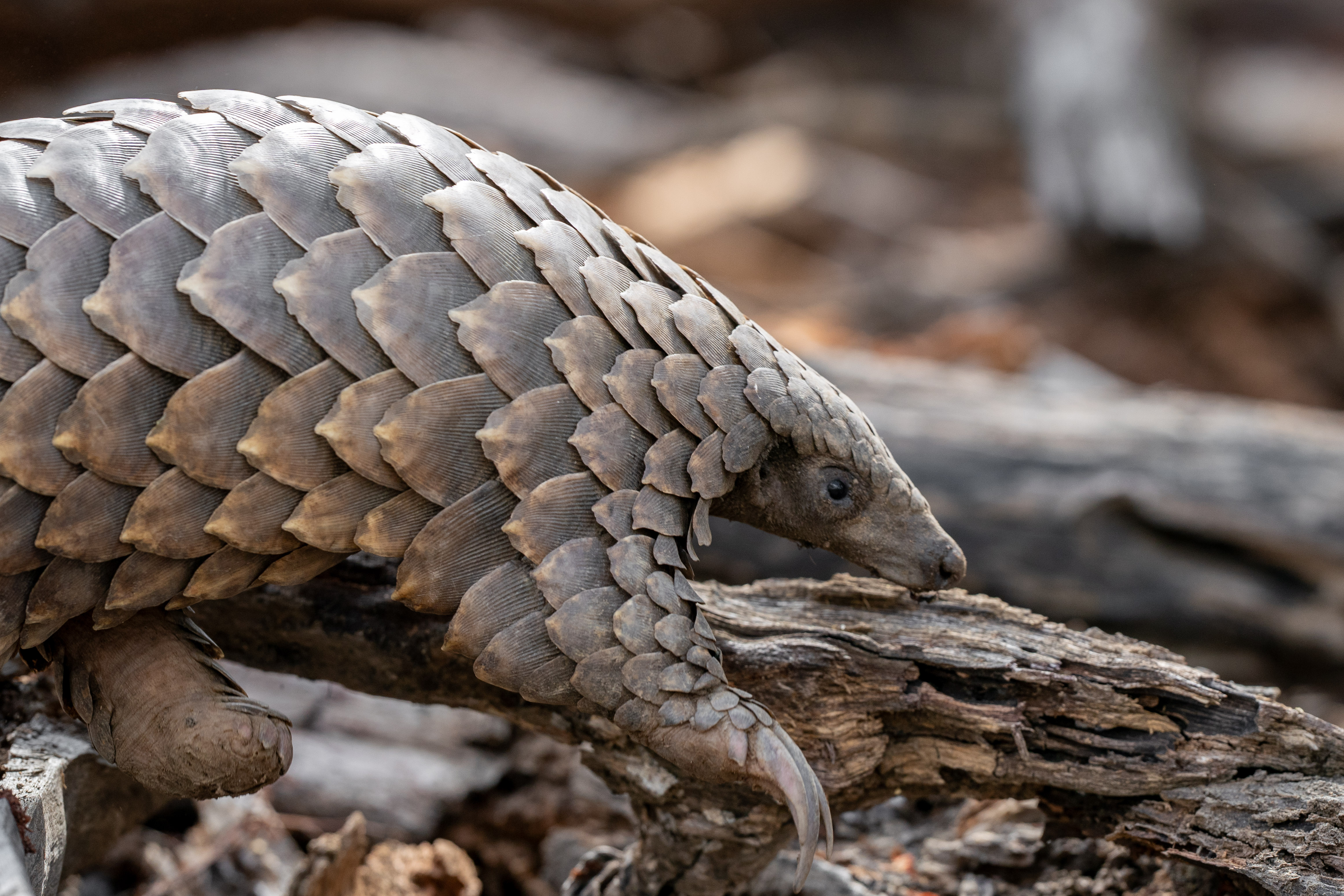
As part of the BHS trip, we were able to accompany this team and see a pangolin up close. I can’t put into words how beautiful this experience is. It was deeply moving to see this vulnerable creature strutting around on its hind legs, seeming without a care even knowing the traumatic past it came from and knowing it will soon return to the wild. For me, that experience alone made the journey worthwhile, and I can only hope to do it again someday.
BHS stays with Gorongosa Safaris who runs Muzimu Lodge and Chicari Camp. Both are a must to visit because they are quite different from each other.
Muzimu Lodge features six spacious canvas chalets that blend seamlessly into the surrounding wilderness along the Mussicadzi River. The atmosphere is comfortable and immersive. Elevated walkways connecting the chalets to the main lounge, pool and dining area. Food is delicious and the staff is incredibly warm and accommodating.
Chicari Camp opened in June 2025 and is one of my favorite camps I have ever visited in Africa! It is situated around the wildlife-rich Chicari Pan. This camp offers ten thoughtfully designed canvas tents and treehides overlooking the pan. What I loved about Chicari is the combination of the ‘rustic’ tent which makes you feel very close to nature, with a very modern and open lounge and dining area. Chicari is situation in a sand forest and the birdlife (and dawn chorus) is spectacular.
Gorongosa is going to continue to develop and grow in popularity. For me, it was exciting and a true privilege to visit it while it is still relatively unknown. It feels like experiencing Africa’s best kept secret.
If this story has you dreaming of your own adventure, consider getting in touch and letting us put together a safari of a lifetime and experience Gorongosa before the rest of the world catches on.
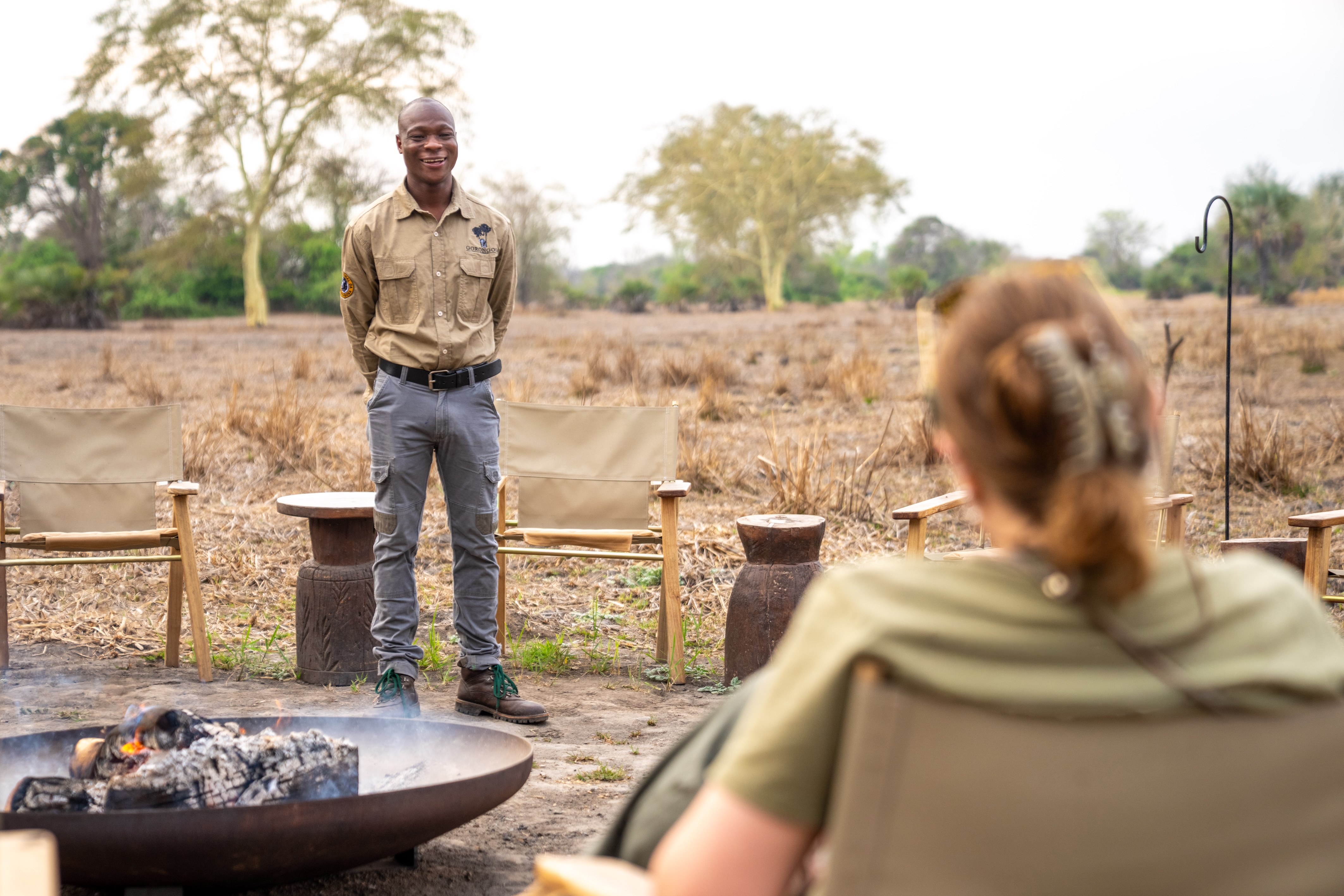
Read more: Gorongosa - Africa's Lost Eden: The Ultimate Safari Destination

